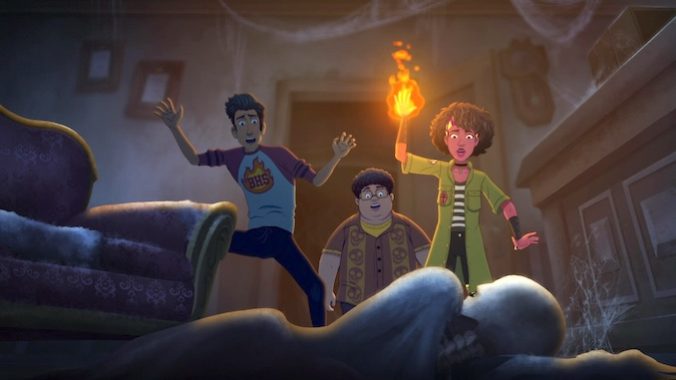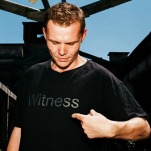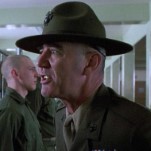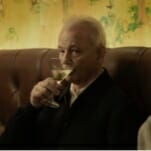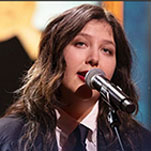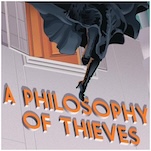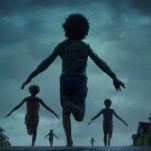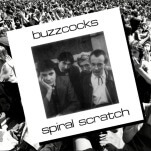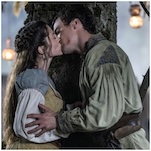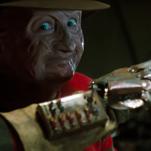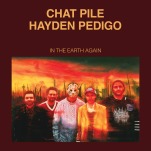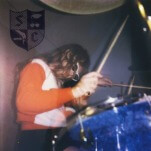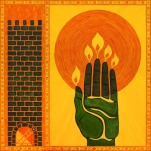Toon In: Animated TV Highlights for October 2023, from the Castlevania: Nocturne Finale to Treehouse of Horror XXXIV
Photo Courtesy of ABC
Welcome to the ink, paint, and pixel corner of Paste TV, where we’re highlighting some of the best premium animation projects on streaming or direct-to-video aimed for teens and adults. This monthly column not only provides an overview of the new animated series to check out, but we’ve also collected some of the finest creators and voice talents in the medium to give updates, or introductions, to their series.

Teenage Euthanasia – Season Finale Post Mortem (Aired September 28)
All of the animated shows on Adult Swim are odd, but that makes this network such a special playground of series that embrace non-conformity and abstract animation design. Case in point, Alyson Levy and Alissa Nutting’s white trash comedy, Teenage Euthanasia, which just ended its second season of zombie hijinks performed by the most-Florida of characters, Trophy Fantasy (Maria Bamford).
“Our only limitations we could possibly have are just ourselves,” Levy tells Paste about the bonkers places they go in any given episode. “We try to really push every single story, episode, character, and design to challenge ourselves and make ourselves laugh… or just creep each other out, whichever feels right for that day. The voice of the show is unique, and we try to protect that.”
If you haven’t caught Teenage Euthanasia, its high concept premise centers on “Annie” Fantasy (Jo Firestone), an insecure teen brought up by her grandma Baba (Bebe Neuwirth) and her Uncle Pete (Tim Robinson) in their family-run funeral home, Tender Endings in Fort Gator, Florida. Annie is reunited with the corpse of her narcissist mom, Trophy, in a bizarre revival that brings the family together under one roof.
The rare animated comedy written by women with a woman-centric story, Nutting says they don’t take that for granted. “We really like to write for the teens who are in therapy, or the teens who are lonely, left out or feel like no one gets them and they don’t have a place in the world,” she says. “Annie, our protagonist, has a lot of those qualities at different times. And it’s nice to have a core cast in a show that’s not only three generations of women, but they’re also three generations of women who are all outsiders. They all differ from what we’re told to be as women, both in their generation and also throughout all of time.”
Levy continues, “And while it’s a show that’s really absurd and really crazy, it is also real and about real stuff. Between the characters, there is real emotion and real caring on some level. That interested us, so we’re not just like a joke machine. We are, but there are things we felt like we wanted to talk about in being a mother, being a daughter, and just being a woman.”
The second season finale, “A Very Fantasy Vacation,” ended on an epic road trip that took the Fantasy family out of Florida for the first time, and essentially pulled a Bugs Bunny by forcibly separating the state from the continent. Levy says they wanted to go big just to see how far they could push the boundaries of their own show.
And Nutting says Florida being relentlessly ribbed by the show is done with a lot of love. “Florida is this magical place where it’s sort of all out in the open and even celebrated in some ways of just being the proud train wreck of the United States,” she says with sincerity. “It allows for a lot of social commentary, and I think in a lot of ways, it’s discounted, forgotten, and seen as too tacky for the rest of society, which is exactly how this family and all our characters are seen. The nesting doll of metaphors is so rich.”
As for their finale, it ends on a big twist that implies the series is a fanciful story that’s being told by a gator dad to his gator kids. Done in a more Disney style of animation, Levy says that the whole scene came very late in the episode’s planning. “It came during the animatic, where it just felt like it needed an extra button on it,” she explains. “I think for us, it’s just an acknowledgement of the storytelling of this show. And one of the little alligators is Alissa’s daughters.”
The team is currently in negotiations to make a third season, so they hope people will watch the show on Max and tell their friends. And they thank everyone who watches it live, which makes a big difference. “We have a lot of ideas and ones that we didn’t get to do,” Levy says. “For us, the show goes on forever. I feel like we’ve just barely scratched the surface because the more you know the characters, the funnier and better the show gets.”
-

-

-

-

-

-

-

-

-

-

-

-

-

-

-

-

-

-

-

-

-

-

-

-

-

-

-

-

-

-

-

-

-

-

-

-

-

-

-

-


